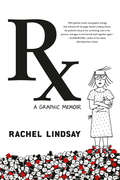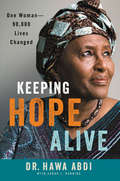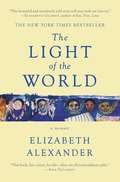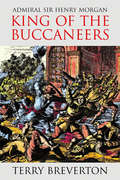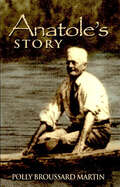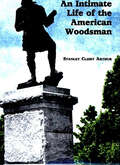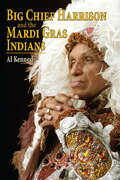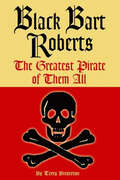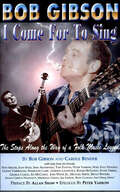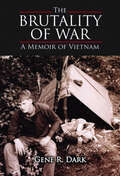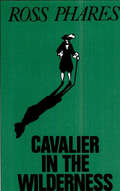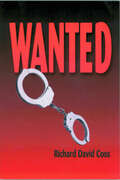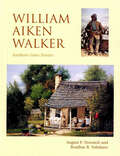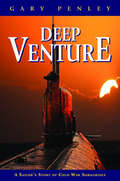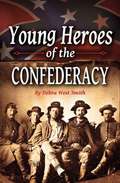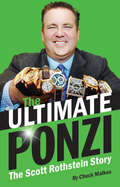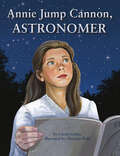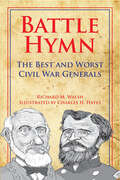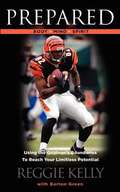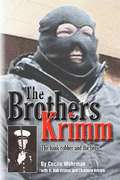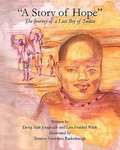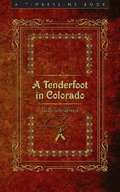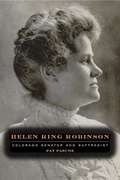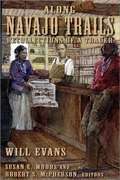- Table View
- List View
RX
by Rachel LindsayA graphic memoir about the treatment of mental illness, treating mental illness as a commodity, and the often unavoidable choice between sanity and happiness.In her early twenties in New York City, diagnosed with bipolar disorder, Rachel Lindsay takes a job in advertising in order to secure healthcare coverage for her treatment. But work takes a strange turn when she is promoted onto the Pfizer account and suddenly finds herself on the other side of the curtain, developing ads for an antidepressant drug. She is the audience of the work she's been pouring over and it highlights just how unhappy and trapped she feels, stuck in an endless cycle of treatment, insurance and medication. Overwhelmed by the stress of her professional life and the self-scrutiny it inspires, she begins to destabilize and while in the midst of a crushing job search, her mania takes hold. Her altered mindset yields a simple solution: to quit her job and pursue life as an artist, an identity she had abandoned in exchange for medical treatment. When her parents intervene, she finds herself hospitalized against her will, and stripped of the control she felt she had finally reclaimed. Over the course of her two weeks in the ward, she struggles in the midst of doctors, nurses, patients and endless rules to find a path out of the hospital and this cycle of treatment. One where she can live the life she wants, finding freedom and autonomy, without sacrificing her dreams in order to stay well.
Keeping Hope Alive: One Woman--90,000 Lives Changed
by Hawa Abdi Sarah J. RobbinsThe moving memoir of one brave woman who, along with her daughters, has kept 90,000 of her fellow citizens safe, healthy, and educated for over 20 years in Somalia. Dr. Hawa Abdi, "the Mother Teresa of Somalia" and Nobel Peace Prize nominee, is the founder of a massive camp for internally displaced people located a few miles from war-torn Mogadishu, Somalia. Since 1991, when the Somali government collapsed, famine struck, and aid groups fled, she has dedicated herself to providing help for people whose lives have been shattered by violence and poverty. She turned her 1300 acres of farmland into a camp that has numbered up to 90,000 displaced people, ignoring the clan lines that have often served to divide the country. She inspired her daughters, Deqo and Amina, to become doctors. Together, they have saved tens of thousands of lives in her hospital, while providing an education to hundreds of displaced children. In 2010, Dr. Abdi was kidnapped by radical insurgents, who also destroyed much of her hospital, simply because she was a woman. She, along with media pressure, convinced the rebels to let her go, and she demanded and received a written apology.Dr. Abdi's story of incomprehensible bravery and perseverance will inspire readers everywhere...
The Light of the World: A Memoir
by Elizabeth Alexander"PULITZER PRIZE IN LETTERS: BIOGRAPHY FINALIST"<P> "NATIONAL BOOK CRITICS CIRLE AWARDS AUTOBIOGRAPHY FINALIST"<P> New York Times Bestseller<P> First Lady Michelle Obama's Favorite Book of 2015<P> A New Yorker, NPR, Boston Globe, Publisher's Weekly, Newsday, Library Journal, People.com, Shelf Awareness, The Root, and St. Louis Dispact Best Book of 2015 Pick<P> New York Times Book Review Editor's Choice<P> An Amazon's Best Book of the Month, April 2015<P> IndieBound Indie Next #1 Pick, May 2015<P> A deeply resonant memoir for anyone who has loved and lost, from acclaimed poet and Pulitzer Prize finalist Elizabeth Alexander.<P> In THE LIGHT OF THE WORLD, Elizabeth Alexander finds herself at an existential crossroads after the sudden death of her husband. Channeling her poetic sensibilities into a rich, lucid price, Alexander tells a love story that is, itself, a story of loss. As she reflects on the beauty of her married life, the trauma resulting from her husband's death, and the solace found in caring for her two teenage sons, Alexander universalizes a very personal quest for meaning and acceptance in the wake of loss.<P> THE LIGHT OF THE WORLD is at once an endlessly compelling memoir and a deeply felt meditation on the blessings of love, family, art, and community. It is also a lyrical celebration of a life well-lived and a paean to the priceless gift of human companionship. For those who have loved and lost, or for anyone who cares what matters most, THE LIGHT OF THE WORLD is required reading.
Admiral Sir Henry Morgan: King of the Buccaneers
by Terry BrevertonDiscover the truth about the 17th-century Welsh naval officer who became a hero for the British Empire—and not a bloodthirsty pirate.This is the swashbuckling biography of the naval officer known as the Sword of England, the Welshman Henry Morgan. Over the years, Morgan came to be portrayed as a black-hearted, fierce pirate. This error in terms and in the assessment of Morgan’s character led to the filing of the first libel lawsuit, brought in protest to a book published in 1684 claiming he had been an indentured servant, was a pirate, and was responsible for atrocities. In fact, Morgan was commissioned to aid the British navy in fighting enemies of the crown and was a superb military tactician who led a dozen victorious campaigns against massive odds.In 1655, Spain was the greatest naval and military power on earth, and controlled the sea lanes of Central America and the Caribbean. Henry Morgan’s career as a buccaneer officially began when, at age twenty, he landed in Barbados as part of a force deployed to capture Cuba or Hispaniola (Puerto Rico) for the British. The deployment failed, but the forces did capture Jamaica, which would become Morgan’s adopted home base for the rest of his life. From there, Morgan planned the attacks that would enrich the British throne and usher in the era of British supremacy on the high seas.For his leadership in battle and as lieutenant governor of Jamaica, Admiral Sir Henry Morgan deserves to take his place alongside Sir Francis Drake and the Duke of Wellington in the panoply of history’s greatest heroes.
Anatole's Story
by Polly Broussard MartinA biographical novel following the life of the Cajun religious leader in southern Louisiana and his spiritual journey in the early twentieth century.Anatole&’s Story is a biographical novel about author Polly Broussard Martin&’s father-in-law, Anatole Martin, and his spiritual journey, which transformed the religious landscape of the areas below Houma, Louisiana. Polly Broussard Martin writes with poignancy about Anatole&’s unwavering faith in the Bible and his lifelong devotion to serving God. Anatole&’s life began on April 23rd, 1882, in Bayou Blue, Louisiana, during a time when almost all South Louisianians were devout Catholics. He picked up his father&’s Bible, one given to him by a Confederate soldier, and began to read. This first experience with the Bible led to his lifetime quest for spiritual truth and his dedication to spreading Christ&’s message to his Cajun and Indian neighbors. Without any prior religious instruction, Anatole founded his own church, the Spiritual Church. He often traveled through the marshy, and sometimes dangerous, swamps in only a small pirogue, wanting to leave no one untouched by the gospel. After learning of the Methodist faith, Anatole became a Methodist convert. But in 1930, Anatole decided to enroll in correspondence classes to further his knowledge of the Baptist faith and was ordained a Baptist minister in 1936. His life was spent leading his neighbors into deeper spiritual lives, always looking to his Bible as his mentor. This tenderly crafted novel serves not only as the story of one man&’s extraordinary bond with his Bible, but also as a vital piece of historical literature on South Louisiana. Anatole&’s untiring efforts to spread the gospel to his fellow Cajuns built the solid religious foundation on which South Louisianians now stand. Praise for Anatole&’s Story &“An asset to any Louisiana history collection . . . books on the growth . . . of Protestantism in South Louisiana are lacking.&” —Mary Cosper LeBoeuf, director, Terrebonne Parish Libraries &“The story of Anatole Martin and his work is an invaluable resource for historical research and information of Baptists in South Louisiana.&” —Karon Smith, archivist, Louisiana Baptist Convention
Audubon: An Intimate Life of the American Woodsman
by Stanley Clisby Arthur&“In recreating The American Woodsman, as Audubon so delighted to characterize himself, it is with the hope that I shall let him speak for himself, and set him wandering again in the printed pages as he did, a century and more ago, through the magnolia forests of his beloved Louisiana.&” —Stanley Clisby Arthur, from the Prologue John James Audubon was one of the greatest artists and naturalists of all time. For many years a biographical screen consisting of a heterogeneous combination of fact, fancy, and misrepresentation obscured the real Audubon. Some of the contributions to this shroud were penned by loving but misguided relatives who, through domestic partiality when writing about him, colored his life misleadingly. His own account of himself and his affairs, which was never completed and was generously edited before being given to the public, is manifestly not four-square with fact . . . for Audubon had a romantic imagination which defeats verification. This detailed biography provides an extensive look into the background of a man variously described as a dandy, an unkempt wanderer, and a gifted artist. Above all, it is clear that John James Audubon was a man of many talents, revealed here in his own words.
Big Chief Harrison and the Mardi Gras Indians
by Al KennedyA biography of the life, work, and legacy of a pivotal figure in New Orleans cultural history. Based on more than seventy interviews with the subject and his close friends and family, this biography delves deep into the life of Donald Harrison—a waiter, performer, mentor to musicians, philosopher, devoted family man, and, most notably, the Big Chief of the Guardians of the Flame, a Mardi Gras Indian tribe. The firsthand accounts and anecdotes from those who knew him offer insight into the electrifying existence of a man who enriched the culture of New Orleans, took pride in his African American heritage, and advocated education throughout the city. Beneath a vibrant costume of colorful feathers and intricate beading stood a man of conviction who possessed a great intellect and intense pride. Harrison grew up during the Great Depression and faced discrimination throughout his life but refused to bow down to oppression. Through determination and an insatiable eagerness to learn, he found solace in philosophy, jazz, and art and spiritual meaning in the Mardi Gras Indian tradition. He shared his ideals and discoveries with his family, whom he protected fiercely, until he took his last breath in 1998. Harrison&’s wife, children, and grandchildren continue to carry his legacy by furthering literacy programs for New Orleans&’ youth. From Harrison&’s birth in 1933 to his desire to become a Mardi Gras Indian to the moment he met his beloved wife, author Al Kennedy shares Harrison&’s significant life experiences. He allows Big Chief Donald to take center stage and explain—in his own words—the mysterious world of the Mardi Gras Indians, their customs, and beliefs. Rare personal photographs from family albums depict the Big Chief with his family, parading through the streets on Carnival Day, and performing the timeless rituals of the Mardi Gras Indians of New Orleans. This well-researched biography presents a side of the Big Chief the public did not see, revealing the rebellious spirit of a man who demanded respect, guarded his family, and guided his tribe with utmost pride. Praise for Big Chief Harrison and the Mardi Gras Indians&“Enormously enjoyable, richly informative, and deeply moving. . . . To meet the Harrisons is to encounter an America you can't help but fall in love with and be inspired by forever, while gaining a glimpse into the powerful and meaningful tradition of the Mardi Gras Indians in New Orleans. It's a story of strength, passion, survival, and resistance. It&’s a story for today.&” —Jonathan Demme, Academy Award–winning director&“Building on his impressive knowledge of New Orleans culture, Al Kennedy delivers a masterpiece of artistic biography. The world needs to know about Big Chief Donald Harrison, Sr. Al Kennedy tells his full story in this wonderful book. . . . A powerful read.&” —Robert Farris Thompson, Col. John Trumbull Professor, History of Art; Master of Timothy Dwight College, Yale University; and author, Tango: The Art History of Love, Face of the Gods, and Aesthetic of the Cool
Black Bart Roberts: The Greatest Pirate of Them All
by Terry BrevertonThe story of the last buccaneer of the Golden Age of Piracy—a fascinating figure who was far from the stereotypical swashbuckler. Pirate Black Bart Roberts roamed the Atlantic from age thirteen in 1695 until his death in an ambush by the Royal Navy off Cape Lopez on the Guinea coast in 1722. Those years, coinciding with the Golden Age of Piracy, are chronicled here in excerpts from firsthand accounts and court documents, along with vintage illustrations and maps and the superb historical analysis of Terry Breverton. Though they&’re more famous, pirates Blackbeard and Captain Kidd took only thirty vessels between them, compared to Black Bart&’s more than four hundred. And while today&’s image of a pirate includes a drunken sway within the swashbuckling—and few would argue that many a crew and captain of the era were prodigious drunkards—Black Bart Roberts breaks the mold. Not only was he a Christian who ordered his musicians to play hymns each Sunday, he was also famous among his seagoing contemporaries for his abstention from alcohol. Tall for the time, and dressed head to toe in red silk, Black Bart was a striking figure whom maritime history will not soon forget.
Bob Gibson: I Come for to Sing
by Carole Bender Bob GibsonInspired by a meeting with Pete Seeger, a young Bob Gibson left behind a successful job to collect folk songs. His arrangements, songwriting, and musical innovations took his audiences by storm, lighting the fire that led to the full-blown folk-music revival of the late 1950s. He introduced Joan Baez in 1959, Judy Collins in 1960, and his songs have been recorded by Peter, Paul & Mary, Simon & Garfunkel, The Kingston Trio, and many others. The book follows Bob Gibson through his meteoric rise to fame, his twenty-year struggle with drug addiction, and his never-ending process of reinventing himself to find new expressions for his art. Two years after his life-changing meeting with Pete Seeger, Gibson burst onto the music scene with an unprecedented joy for his music. He not only changed public perception of what folk music was, but he helped introduce a new format for the presentation of music, which became the coffeehouse circuit. His own arrangements of folk music, coupled with his original songs, began the trend of the 1950s and 1960s in which songwriters created their own modern day folk songs, giving expression to that turbulent era. Bob Gibson: I Come For To Sing includes the reminiscences and interviews with many musicians and songwriters including Gordon Lightfoot, Joan Baez, George Carlin, Judy Collins, and Odetta, as well as many others instrumental to the formulation of the folk-music revival of the 1960s.
The Brutality of War
by Gene R. DarkA US Marine Corps Vet offers a gripping firsthand account of fighting on the frontlines of Vietnam in this hard-hitting memoir. In 1968, nineteen-year-old Gene R. Dark joined the Marine Corps. It was the height of the Vietnam War, and Dark was assigned to Fox Company, Second Battalion, Fifth Marines—one of the most decorated companies to be deployed there. A carefree young man when he had entered the service, Dark was soon transformed into a hardened soldier. Dark recounts his experience in the notoriously dangerous Arizona Territory, humping through the swampy jungles, forging a brotherhood with his fellow soldiers, and watching many of those same comrades die in combat. While Dark found solace in surrendering his fate on the battlefield to God, it took him many years to find peace with his experiences. A tribute to every man and woman who has served the United States, this moving account demonstrates the exacting price of war on America and her many fallen, forgotten, and heroic soldiers.
Cavalier in the Wilderness
by Ross PharesFor the greater part of the first half of the eighteenth century, Louis Juchereau de St. Denis was the guiding force on the Louisiana-Texas frontier. It is probable that no other man exercised such a determining influence over so long a period in the early affairs of Louisiana and Texas. His rare talents served a vital and peculiar need for colonial France in a critical and most formative period.Published accounts of St. Denis have been as inconsistent as the documents of his lifetime and by their very nature, as prejudiced. Interpretations of him have run the gamut from patriot to traitor, from saint to scoundrel. This was a period of heated rivalries. The French slanted their records according to their purposes and prejudices. The Spanish, with equally human weaknesses and zeal, did likewise. Furthermore, the commercial company which administered the affairs of the Louisiana colony was often at variance with the home government. . . . St. Denis, on [the author's] first study of conflicting records, appeared to be a most puzzling and inconsistent character operating against an unintelligible background. However, after many years of research and study on the subject, the author sees him as a character of rather consistently fixed purposes and principles.-from the Preface
Wanted
by Richard David CrossAfter leading a life of crime from a young age, a man finds God and a whole new life as a Christian minister in this inspirational memoir. In this riveting autobiography, the author, the son of alcoholic parents, reveals that he committed his first crime at the age of nine. At eleven years of age, he stabbed a student at school, and by the time he was twenty-five years old, Richard David Coss had served almost nine years behind bars. He had accumulated thirty-two arrests, twenty-eight convictions, and a reputation with the FBI as a &“dangerous and incorrigible&” criminal. Bored with the monotony of cell life and looking for a diversion, Coss wandered into a meeting of Christian businessmen and fellow inmates at the prison chapel. One of the men introduced himself and sat with Coss. Before Coss knew it, his anger and hatred had become irrelevant. What counselors, psychologists, sociologists, correction officers, special schools, threats, and prison had been unable to do in sixteen years was accomplished in a mere fifteen minutes. After an awakening desire to change, Coss faced his situation, discovered hope, and transformed his life. While still in prison, his influence resulted in changing the lives of other inmates. He was released in 1971. In the years that followed, he experienced his share of gains and losses, yet no loss was as severe as that suffered on April 19, 1995—the day of the Oklahoma City bombing. Coss, a grandfather at the time, described that day as &“the worst day of my life.&” Yet he and his remaining family survived with the support of each other and the strength of their faith.
William Aiken Walker: Southern Genre Painter
by August Trovaioli Roulhac B. ToledanoA study of the South Carolina native&’s life as an artist and as a man, with 157 color illustrations and fifty-eight black-and-white paintings and drawings. Born in South Carolina in 1838, William Aiken Walker remains one of the South&’s most gifted and treasured artists. Though mostly known for his breathtaking depictions of Black Southerners following the Civil War, he is also recognized for his lush and vivid landscapes, which capture the eye and the imagination. After serving in the Confederate Army during the Civil War, Walker traveled throughout the South to sell his paintings to tourists in areas such as New Orleans, Charleston, and cities across Georgia. In those years, he created the most extensive record of Black life of the period and permanently influenced art in the South. With 157 color illustrations and fifty-eight black-and-white paintings and drawings, William Aiken Walker is a remarkable documentary of Walker&’s life as an artist and as a man. First published in 1972, this book is now presented by Pelican in a stunning new edition that includes scores of color photographs not used in the previous edition. Praise for William Aiken Walker: Southern Genre Painter&“Now in a new and expanded edition . . . William Aiken Walker: Southern Genre Painter is an informed and informative history of his life and work, enhanced with the inclusion of 157 color illustrations and 58 black-and-white paintings and drawing. . . . An ideal memorial tribute to a truly talented 19th century American painter.&” —The Midwest Book Review &“[Toledano] has brought Walker . . . back to life for art lovers the world over.&” —The Hook
Deep Venture: A Sailor's Story of Cold War Submarines
by Gary PenleyA U.S. Navy submariner’s account of his adventurous life in service beneath the waves.Beginning on a cattle ranch in Colorado, this memoir follows a young sailor on his voyage around the world. After enlisting in the U.S. Navy in 1960 and completing the Nuclear Power School program, Gary Penley embarks on a series of adventures-often at risk of his life-while serving on a submarine as a power plant operator.During his seven years with the navy, Penley and his shipmates encounter several frightening situations. While on submerged patrol in the Mediterranean Sea, his submarine, the USS Hamilton, strikes a heavy object, which tears a large hole in the ballast tank and threatens to sink the submarine. Later, they ride out a ferocious storm in the Arctic Circle that nearly submerges the vessel. Another harrowing experience occurs when the sailors, while on a top-secret mission in the Mediterranean during the Six-Day War, are attacked by unknown enemy ships and barely escape unscathed.Throughout his expeditions, Penley stops in such countries as Spain, Scotland, Italy, and Japan. In this captivating memoir, he recounts the coping skills necessary to live in a confined space for extended patrols while facing constant danger—often resulting in hilarious scenarios that only wild submarine sailors could conjure. He also provides a detailed description of the submarine and explains how the machines operate. Written in a candid tone, this memoir carries the reader along for the epic ride.Praise for Deep Venture“Penley uses his naval experience and considerable talent as a storyteller to write a humorous and totally engaging account of life beneath the sea. Against a backdrop of Cold War nuclear deterrence, and the ever-present personal danger faced by submariners, he takes us down the hatch into the claustrophobic confines of his submarine and life among an odd collection of sailors willing to endure the hardship of being submerged and incommunicado for months at a time. . . . A unique and highly entertaining story.” —Michael Archer, author of A Patch of Ground: Khe Sanh Remembered“Clear and lucid writing immediately grips the reader as Penley explores the tension, fear, humor, and adventure of navy and submarine life, enriched with a realism and accuracy that is often missing from such accounts. This story deserves a place on the bookshelf of anyone who reads and admires true stories of adventure at sea.” —James Ennes, author of Assault on the Liberty
Young Heroes of the Confederacy
by Debra West SmithThe Civil War is a topic well-known to readers of all ages. However, it is the bravery and strength of the young men and women that is often forgotten. Born into a set of circumstances beyond their control, these children of the 1860s faced the ultimate test of character and courage. Stories of courage in the face of starvation and death, told through biographies of young people from each of the Confederate states, reveals just what kind of heroes they were.
The Ultimate Ponzi: The Scott Rothstein Story
by Chuck MalkusThis true crime exposé details the exploits of a Florida lawyer and master con artist who stole more than a billion dollars before getting caught.In what became one of the most ruthless Ponzi schemes in United States history, Fort Lauderdale attorney Scott Rothstein stole $1.4 billion to finance his opulent lifestyle. It’s a story of corruption, murder, sex, and suicide in which no one is innocent. From Rothstein’s humble beginnings in the Bronx through his sudden rise to become one of the most powerful men in Florida, the full story is revealed in The Ultimate Ponzi.An employment lawyer of flamboyant charm and seemingly endless wealth, Rothstein infiltrated South Florida society by posing as a philanthropist. All the while, he was using criminal kingpin methods to corrupt one prominent businessman after another. But in late 2009, South Florida learned that Rothstein was far from generous—he was a destructive con artist who plundered investor accounts to build his own fortune.With photographs and input from community members and psychologists, The Ultimate Ponzi reveals the man behind the scam that deceived hundreds. Despite Rothstein’s lavish lifestyle, he was unable to escape judgment both from the law and from the society he used to manipulate.
Annie Jump Cannon, Astronomer
by Carole Gerber"Parents and teachers ask me for the names of books for their primary school children. I'm honored to recommend Annie Jump Cannon, Astronomer by Carole Gerber, an excellent book about a true astronomical pioneer." -Paul Kohlmiller, editor, San Jose Astronomical Association newsletter This brilliantly illustrated children's book depicts the achievements of a woman who developed an important system of classifying stars. To this day, Annie Jump Cannon holds the record for identifying more stars than anyone else in the world. In 1925, she became a professor of astronomy at Harvard and the first woman to receive a doctor of science degree from Oxford University. Born during the Civil War, Cannon was determined to pursue a career in astronomy. From her childhood days of studying the constellations with her mother, to her education at Wellesley College and her job in the Harvard Observatory, this biography follows Cannon's inspirational path to success. The story notes the challenges the astronomer faced, such as an illness that left her partially deaf and gender discrimination, while capturing her shining moments as she worked to become the "census-taker of the stars."
Battle Hymn: The Best and Worst Civil War Generals
by Richard M. WalshThis entertaining work analyzes the strengths and weaknesses of the Civil War&’s top Union and Confederate generals using extensive primary documents and original research. Included are the surprising answers to intriguing questions: How did Union general Ulysses S. Grant attain such a high rank after numerous failures in civilian life? What made the dour, almost fanatically religious Stonewall Jackson perhaps the best combat leader in the Confederacy? History professor Richard M. Walsh explains why Ambrose Burnside was demoted, who gave George McClellan the nickname &“Little Napoleon,&” and why men of both sides respected Robert E. Lee. Walsh even includes outstanding citizen soldiers who quickly advanced in rank on both sides in his remarkable chronicle. Fascinating facts are gathered in chapters that group the generals from the worst to the not so bad to the best, all punctuated by satirical portraits drawn by Charles H. Hayes. Walsh&’s record is a must read for history buffs from both sides of the Mason-Dixon!
Prepared: Using the Gridiron's Boundaries to Reach Your Limitless Potential
by Reggie Kelly Barton GreenReggie Kelly of the Cincinnati Bengals tells how our measure of success, both on the field and in our daily life, is defined by what we are willing and able to do, despite our surroundings. From the first backyard Training Camp--the Garden of Eden--to the grassy scrimmage line of an NFL faceoff, Reggie explores the timeless lessons that shape the three ever-developing parts of mankind: the Body, Mind and Spirit. As Reggie notes, "Be it the gates of Heaven or the goalposts of the Super Bowl, we are not worthy, nor ready to stand before either until we are first ... prepared. "
The Brothers Krimm: The Bank Robber and the Hero
by Cecile Wehrman H. Krimm Charlene KrimmOn September 14, 2009, a serial bank bandit scores one of his biggest hauls ever in Williston, N. D. Jimmy Krimm has been robbing banks for most of his adult life, but the biggest crime he ever committed took place before he left his mother's Michigan home decades earlier. When police deliver the news that her oldest son is dead, Charlene Krimm is left pining for any children he may have fathered, and with the task of breaking the news to her younger son, Rob -- Jimmy's first victim. "The Brothers Krimm" examines the way childhood sexual abuse forms two men --turning one into a predator -- and the other into the kind of hero whose triumph is found in his will to rise above the past. In the wake of the events of September 14, 2009, a small town reporter is compelled to dig deeper into the mystery of Jimmy Krimm. Driven by the desire to help his family gain closure, Cecile Wehrman sets out to follow the trail of a serial bank robber -- a trail that leads, inexplicably, to her own doorstep - to the abuse in her own past, and to the very real possibility she could have been Jimmy's next victim. From Chapter 1: "It's a story that will test all of my skills as a researcher. I will have to examine my ethics as a journalist. I will have to open old wounds, personal wounds. My faith will be shaken. Inconsequential things, something as simple as finding a penny, will take on new meaning. . . And it won't be until many months into it that my research will uncover an inexplicable connection to this robber -- this man who terrorized my neighborhood. It is a piece of evidence so startling it will literally knock me to the ground. "With the cooperation of the Krimm family, through prison documents, police records and even Jimmy's own words and photos from the road during his final bank robbing spree, Wehrman chronicles the exploits of a modern day Jesse James - dispelling forever the notion of the dashing bank bandit and replacing it with the portrait of a homeless wanderer who took what he needed, no matter who it hurt.
A Story Of Hope: The Journey Of A Lost Boy Of Sudan
by Deng Ajak Jongkuch Lisa Frankel WadeThis is a beautifully illustrated, poignant story about Deng Jongkuch on his harrowing journey as one of the Lost Boys of Sudan. With hope and courage, he survived many hardships such as walking over 1 year in the desert and nearly 14 years in refugee camps when he was displaced from his family and village during the Sudan Civil war. Proceeds from the sale of this book go to ImpactAVillage, Inc. , a non-profit whose mission is to improve education and healthcare in rural villages in South Sudan and other communities around the world.
A Tenderfoot In Colorado
by Richard Baxter TownshendNow back in print, A Tenderfoot in Colorado is R. B. Townshend's classic account of his time in the wild frontier territory known as Colorado. Townshend arrived in the Rockies in 1869, fresh from Cambridge, England, with $300 in his pockets. He found friends among some of Colorado's more colorful characters, people who taught him much about life on the frontier. Jake Chisolm taught him how to shoot after rescuing him from two men preparing to skin him at poker. Wild Bill of Colorado taught him the meaning of "the drop" and warned him against wearing a gun in town unless he wanted trouble. Capturing the Western vernacular more accurately than any other writer, Townshend includes vivid details of life in the West, where he killed a buffalo, prospected for gold, and was present for the official government conference with the Ute Indians after gold was discovered on their lands.
Helen Ring Robinson
by Pat PascoeHelen Ring Robinson was Colorado's first female state senator and only the second in the United States. Serving from 1913 to 1916, she worked for social and economic justice as a champion of women, children, and workers' rights and education during a tumultuous time in the country's history. Her commitment to these causes did not end in the senate; she continued to labor first for world peace and then for the American war effort after her term ended. Helen Ring Robinson is The first book to focus on this important figure in the women's suffrage movement and the 1913, 1914, and 1915 sessions of the Colorado General Assembly. Author Pat Pascoe, herself a former Colorado senator, uses newspapers, legislative materials, Robinson's published writings, and her own expertise as a legislator to craft the only biography of this contradictory and little-known woman. Robinson had complex politics as a suffragist, peace activist, international activist, and strong supporter of the war effort in World War I and a curious personal life with an often long-distance marriage to lawyer Ewing Robinson, yet close relationship with her stepdaughter, Alycon. Pascoe explores both of these worlds, although much of that personal life remains a mystery. This fascinating story will be a worthwhile read to anyone interested in Colorado history, women's history, labor history, or politics.
Came Men on Horses: The Conquistador Expeditions of Francisco Vásquez De Coronado and Don Juan De Onate
by Stan HoigGuided by myths of golden cities and worldly rewards, policy makers, conquistador leaders, and expeditionary aspirants alike came to the new world in the sixteenth century and left it a changed land. Came Men on Horses follows two conquistadors--Francisco Vázquez de Coronado and Don Juan de Oñate--on their journey across the southwest. Driven by their search for gold and silver, both Coronado and Oñate committed atrocious acts of violence against the Native Americans, and fell out of favor with the Spanish monarchy. Examining the legacy of these two conquistadors Hoig attempts to balance their brutal acts and selfish motivations with the historical significance and personal sacrifice of their expeditions. Rich human details and superb story-telling make Came Men on Horses a captivating narrative scholars and general readers alike will appreciate.
Along Navajo Trails: Recollections of a Trader, 1898-1948
by Will EvansWill Evans's writings should find a special niche in the small but significant body of literature from and about traders to the Navajos. Evans was the proprietor of the Shiprock Trading Company. Probably more than most of his fellow traders, he had a strong interest in Navajo culture. The effort he made to record and share what he learned certainly was unusual. He published in the Farmington and New Mexico newspapers and other periodicals, compiling many of his pieces into a book manuscript. His subjects were Navajos he knew and traded with, their stories of historic events such as the Long Walk, and descriptions of their culture as he, an outsider without academic training, understood it. Evans's writings were colored by his fondness for, uncommon access to, and friendships with Navajos, and by who he was: a trader, folk artist, and Mormon. He accurately portrayed the operations of a trading post and knew both the material and artistic value of Navajo crafts. His art was mainly inspired by Navajo sandpainting. He appropriated and, no doubt, sometimes misappropriated that sacred art to paint surfaces and objects of all kinds. As a Mormon, he had particular views of who the Navajos were and what they believed and was representative of a large class of often-overlooked traders. Much of the Navajo trade in the Four Corners region and farther west was operated by Mormons. They had a significant historical role as intermediaries, or brokers, between Native and European American peoples in this part of the West. Well connected at the center of that world, Evans was a good spokesperson.
